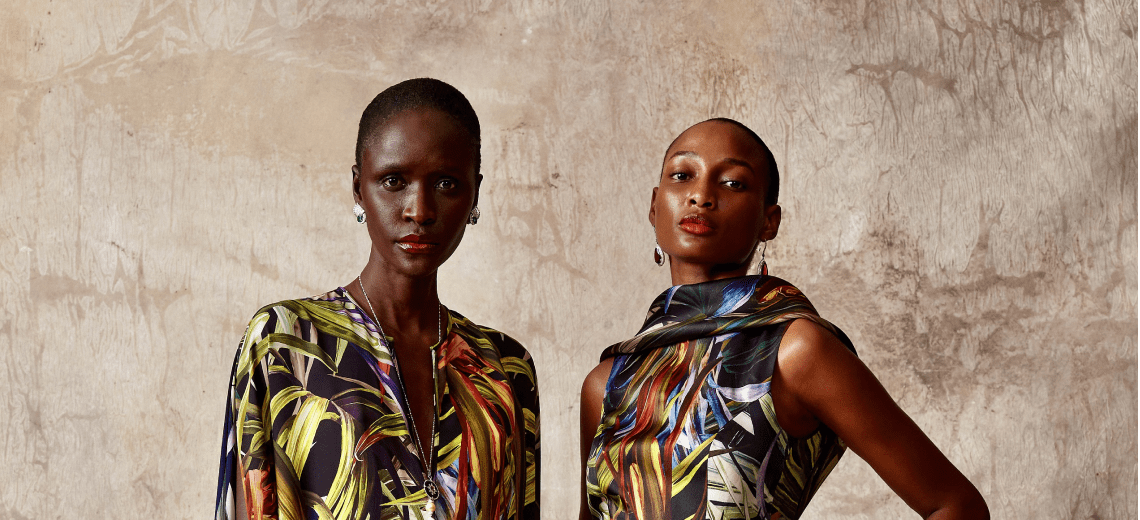In September 2021, designer Naeem Khan was among those making an epic New York Fashion Week comeback, with an opulent 1950s-inspired fashion show. But at the time, he was uneasy about the pandemic.
“It was frightening. Having all those models and all the hair and makeup people in one room, it was like, ‘Oh my God, this can go horribly wrong,'” he said. “Thank God nothing happened. Of course, every precaution was taken.”
And then, when he was planning this season’s runway show, Omicron hit. He had been planning to hold another in-person show, but, like most New Yorkers, multiple people he knew started catching the new variant. And then, he came down with Covid-19 himself. Although it was a mild case, that was the last straw.
So, like many shows this season, his presentation is fully virtual, in the format of a lookbook posted to NYFW.com. Buyers have the option to make appointments to see the gowns in his showroom in person.
Naeem Khan is not alone. Other brands that opted to stay all-virtual this season include Anne Klein, Overcoat, Tadashi Shoji, Nicole Miller, Cinq à Sept, Badgley Mischka, Loring New York and Sandy Liang, to name a few. Others, such as Tom Ford and Kate Spade, canceled participation altogether. The Omicron variant was the main reason brands cited, as they had to make the call on their choice format months ago.
“We planned to do an in-person presentation initially, but because of the Omicron variant, we changed back to virtual, due to the unclear circumstances,” said Long Xu, the designer and founder of Loring New York. The brand is using the shop platform on Runway 360 to allow buyers to pre-order the new season, as of 2 p.m. on February 15.
“[A digital show] really works, from an economic point of view,” said Mark Badgley, designer of Badgley Mischka. Like other designers, he and co-founder James Mischka made the call to go virtual in December when the new variant hit New York. This season, the designers opted to rent out an estate in Long Island to film their seasonal presentation ahead of time.
Ad position: web_incontent_pos1
Secondary concerns caused by the new variant have also made virtual formats easier. One issue mentioned by several designers is the fact that models are now harder to secure.
“There is such a shortage of models,” said Khan. His brand ultimately went with six models for its virtual presentation. “[Many international models] are not being allowed back into the United States because of Covid rules,” he said.
Badgley Mischka, which used three models for its video, noted a similar issue.
“The girls aren’t traveling as much as they used to, and there are a lot fewer shows in New York now, so there’s not much demand for the models,” said Mischka.
But the marketing value of an in-person show cannot be matched, especially in the case of brands that score viral social media moments. Julia Fox’s post-Kanye breakup appearance on the runway of the LaQuan Smith show caused a frenzy on social media and earned the brand a massive amount of media attention.
Ad position: web_incontent_pos2
“You lose the magic” by going all virtual, said Badgley.
One group that seems to be OK with it, however, is buyers.
“Of course, the health and safety of everyone are extremely important, but showing virtually also allows us to have much more exposure to a wider international audience who may not physically be traveling to New York for NYFW,” said Ryuhei Oomaru, founder and designer of fashion label Overcoat.
“All of our major accounts come in” to the showroom to see the clothes, “but they love it” when it comes to having a virtual option, said Badgley. It allows buyers from outside New York “to cut expenses, as they don’t have to travel and send a crew to New York.”
For buyers at fashion week, virtual is “a relief for them, too,” said Khan, based on the feedback he’s heard. And he does not believe the new format will have an impact on wholesale sales.
As the Covid-19 numbers continue to decline in New York, designers hope that next season will make in-person shows possible once again. Some designers, such as Oomaru, plan to keep a digital component for the long term. But they still see value in the physical show.
“Our store [buyers] are frankly getting very conditioned to buying clothes virtually, seeing collections virtually. I hope it doesn’t become a long-term habit. There’s no substitute for actually having a fashion show in person,” said Badgley.
Reading List
Julia Fox shows her revenge look on the LaQuan Smith runway.
A chat with Tia Adeola.
Coach targets the “Euphoria Generation.”




